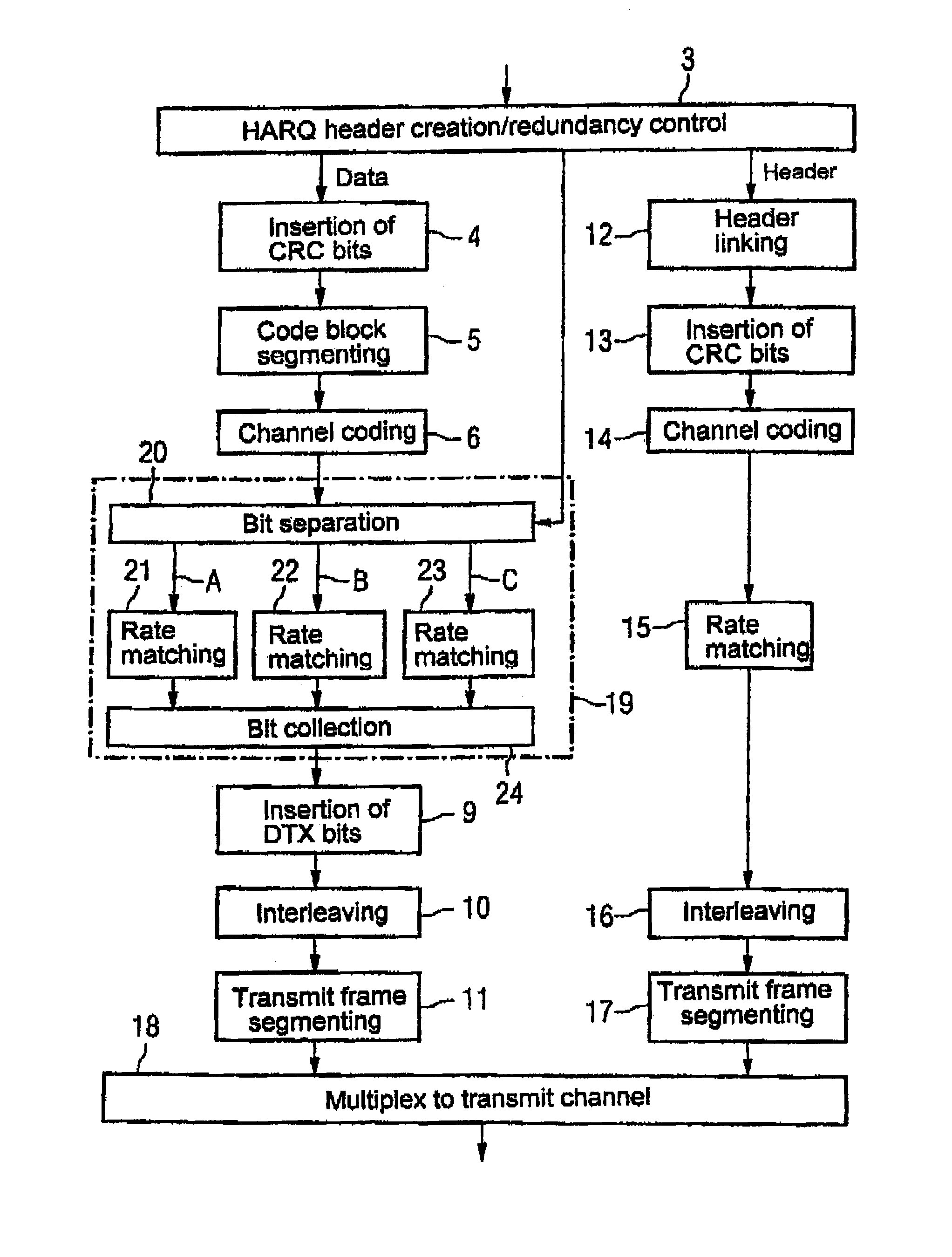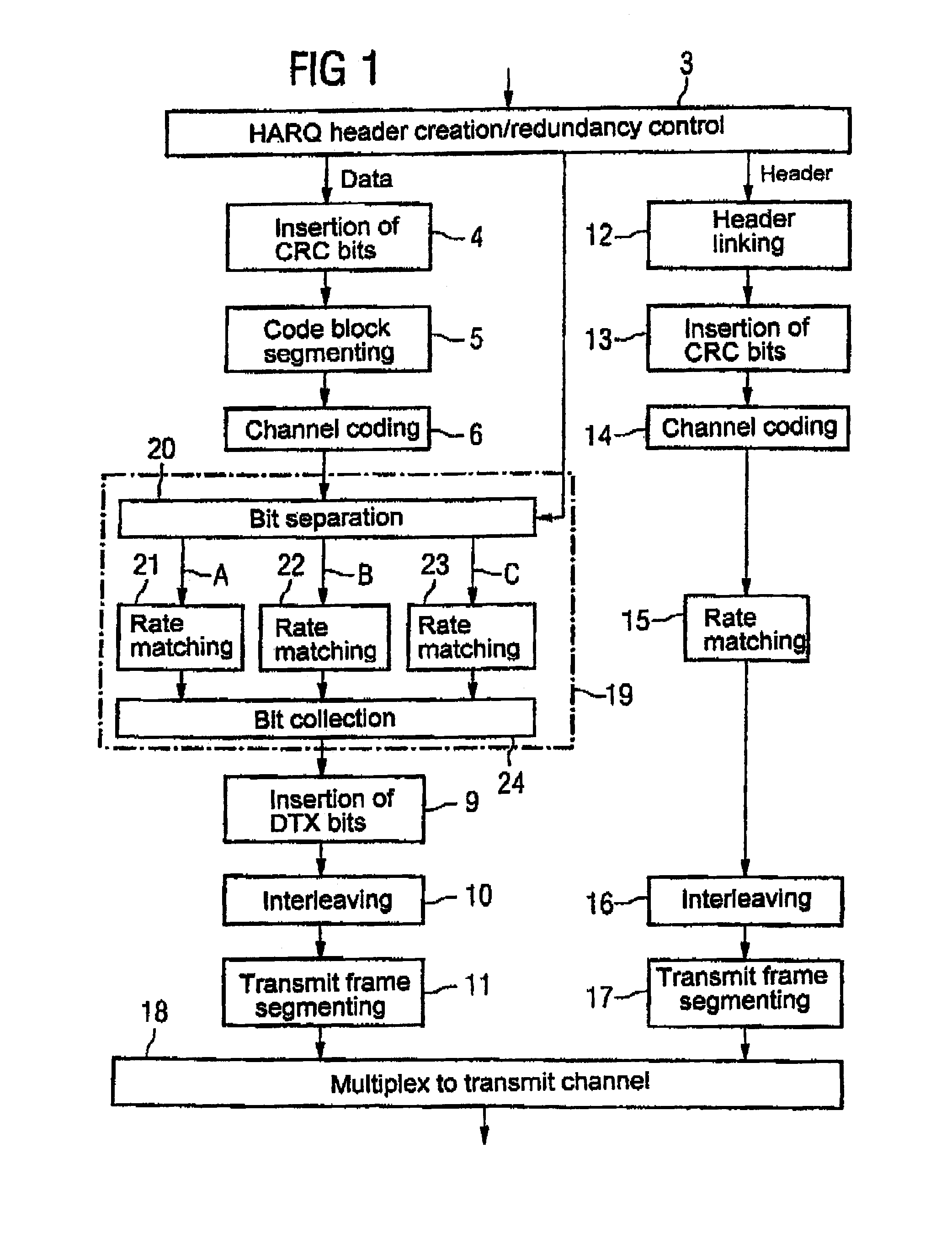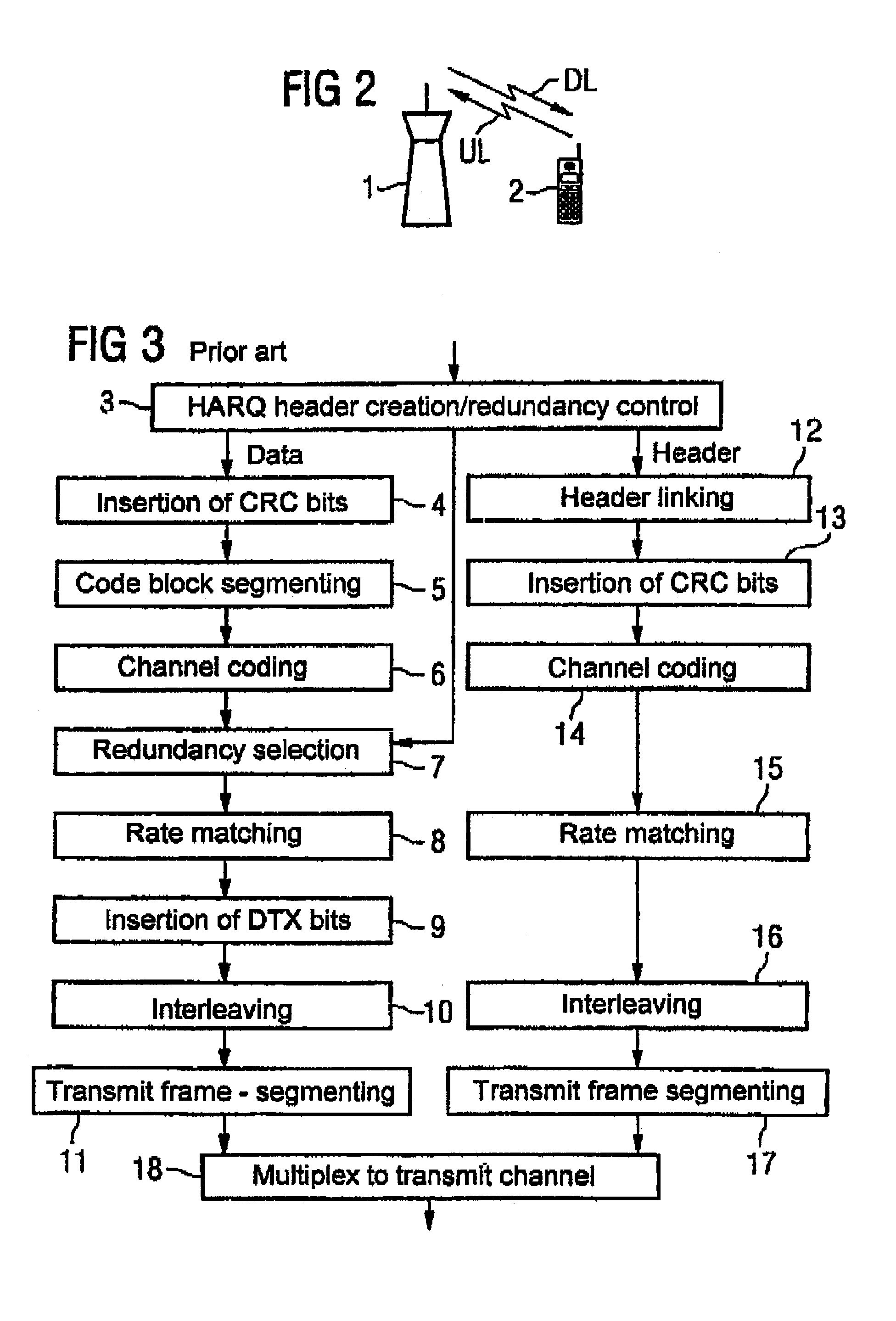Method and device for transmitting data according to a hybrid ARQ method
a technology of transmitting data and hybrid arq, which is applied in the direction of coding, data switching networks, code conversion, etc., can solve the problems of inability to optimize coding, insufficient use of mobile radio frequency range, and insufficient resource occupation, so as to achieve efficient coding process and greater flexibility
- Summary
- Abstract
- Description
- Claims
- Application Information
AI Technical Summary
Benefits of technology
Problems solved by technology
Method used
Image
Examples
Embodiment Construction
[0023]As already explained, the following is based on the idea that packet-oriented data transmission in a mobile radio system, as shown schematically in FIG. 2 by way of example, is to be implemented with the help of the present invention. Thus, FIG. 2 shows by way of example the communication between a base station 1 and a mobile station 2 of a mobile radio system; for example, a UMTS mobile ratio system. The transmission of information from the base station 1 to the mobile station 2 takes place via the so-called downlink channel DL, while the transmission of information from the mobile station 2 to the base station 1 takes place via the so-called uplink channel UL. The present invention is explained below using as an example a packet-oriented data transmission from the base station 1 to the mobile station 2 (i.e., a packet-oriented data transmission via the downlink channel). The present invention also can, however, be used similarly on data transmission via the uplink channel. T...
PUM
 Login to View More
Login to View More Abstract
Description
Claims
Application Information
 Login to View More
Login to View More - R&D
- Intellectual Property
- Life Sciences
- Materials
- Tech Scout
- Unparalleled Data Quality
- Higher Quality Content
- 60% Fewer Hallucinations
Browse by: Latest US Patents, China's latest patents, Technical Efficacy Thesaurus, Application Domain, Technology Topic, Popular Technical Reports.
© 2025 PatSnap. All rights reserved.Legal|Privacy policy|Modern Slavery Act Transparency Statement|Sitemap|About US| Contact US: help@patsnap.com



